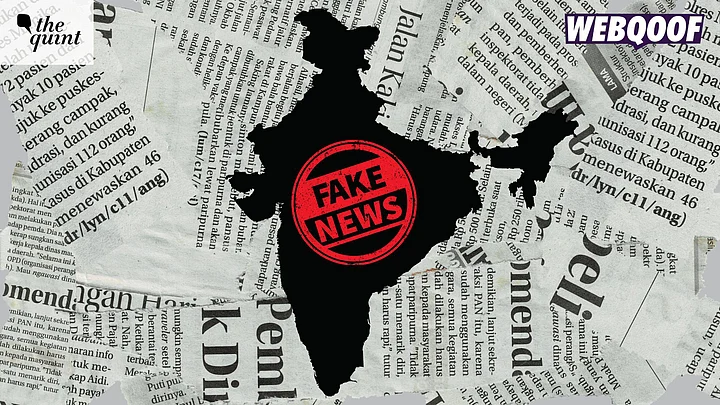Global conflicts, ease of creating content using generative artificial intelligence and elections around the world - these make the perfect recipe for mis/disinformation and lets bad actors spread fake news and deceive people.
A recently-released report by the World Economic Forum (WEF) points out how the presence of misinformation can "destabilise the legitimacy of newly-elected governments". It highlights that the biggest threat of m/disinformation is to India.
This report is based on the Global Risk Perception Survey conducted by the forum and its partner institutes along with 1,500 experts in academia, government and business.
A surge in the circulation of mis/disinformation is noticed during crucial events, and recently, a lot of false narratives is being driven by the development of Artificial Intelligence (AI).
Mis/Disinformation Around Elections
There is a growing concern about the risk of mis/disinformation spreading on social media amid elections. The Quint's WebQoof team debunked a lot a fake news surrounding legislative assembly elections which were held in nine states in 2023.
According to the WEF's report, both misinformation and disinformation is likely to cause a turmoil in the electoral processes over the next two years.
The data shows that India has topped the list of countries facing the risk for mis/disinformation affecting the elections. The country has over 1.4 billion population amongst which over 50 percent has internet penetration, as per the joint report shared in 2022 by Internet and Mobile Association of India (IAMAI) and market data analytics firm Kantar.
Prateek Waghre, Executive Director, Internet Freedom Foundation spoke with WebQoof's team and stressed that the risk of more mis/disinformation linked with politics grows in India due to several structural factors.
"At the level of states - there is a desire to control and shape narratives. At information infrastructures, the incentives generally are to maximise engagement and monetise it directly, or indirectly through amassing large audiences," Waghre states.
"And at the level societies, there are low levels of information literacy, the role of identity-based politics, historical social divisions, and many other complex psycho-social factors," he says.
He further mentions that together these factors manifest to create high-levels of dysfunction in the information ecosystem where false information, exaggeration and hateful conduct are rewarded.
Is AI Advancement Encouraging the Spread of Fake News?
The increasing concerns about fake news is largely fueled by the development of AI and in the hands of bad actors, this pursues the path of spreading false narratives.
Md Sayeed Al-Zaman, an Assistant Professor and researcher at Jahangirnagar University, Bangladesh, states that in the context of elections, the impact of AI is profound and evolving.
"As AI technologies, particularly deepfakes, auto-generated content, and bots, become more sophisticated, there is an increasing risk of them being used as potent tools for political propaganda," Al-Zaman says.
He stresses on how the lack of effective AI-based misinformation detection tools poses a challenge for voters to distinguish between fact and fiction, potentially shaping public opinion and, consequently, election outcomes.
Digitally altered content that portray individuals or groups in a negative light go viral on Indian social media just before the elections to amplify discontent and escalate conflicts.
Real Life Affects of Online Fake News
We have started seeing reports about fake news leading to real-life violence globally. From mass shootings in Washington DC, USA, to women being paraded naked in the streets of Manipur, huge groups of people are falling prey to fake news.
Al-Zaman asserts that misinformation plays a significant role in inciting social unrest.
For cases linked to India, Bangladesh, Pakistan, Sri Lanka, and Myanmar, he says, "Inflammatory and false information can potentially manipulate public sentiments, exacerbate existing tensions, and contribute to social discord."
What Can Be Done About This?
Waghre suggests that more fundamental solutions, such as watermarking, can be explored.
Al-Zaman states, "In my latest research, I found the South Asian region highly susceptible to online censorship over the last seventeen years. Four South Asian countries, including Bangladesh and India, are among the top censored countries globally."
These findings underscore the tightening control over online expression in these countries. Now India has to focus on detecting deepfakes, identifying dissemination methods, documenting instances, and increasing public awareness.
